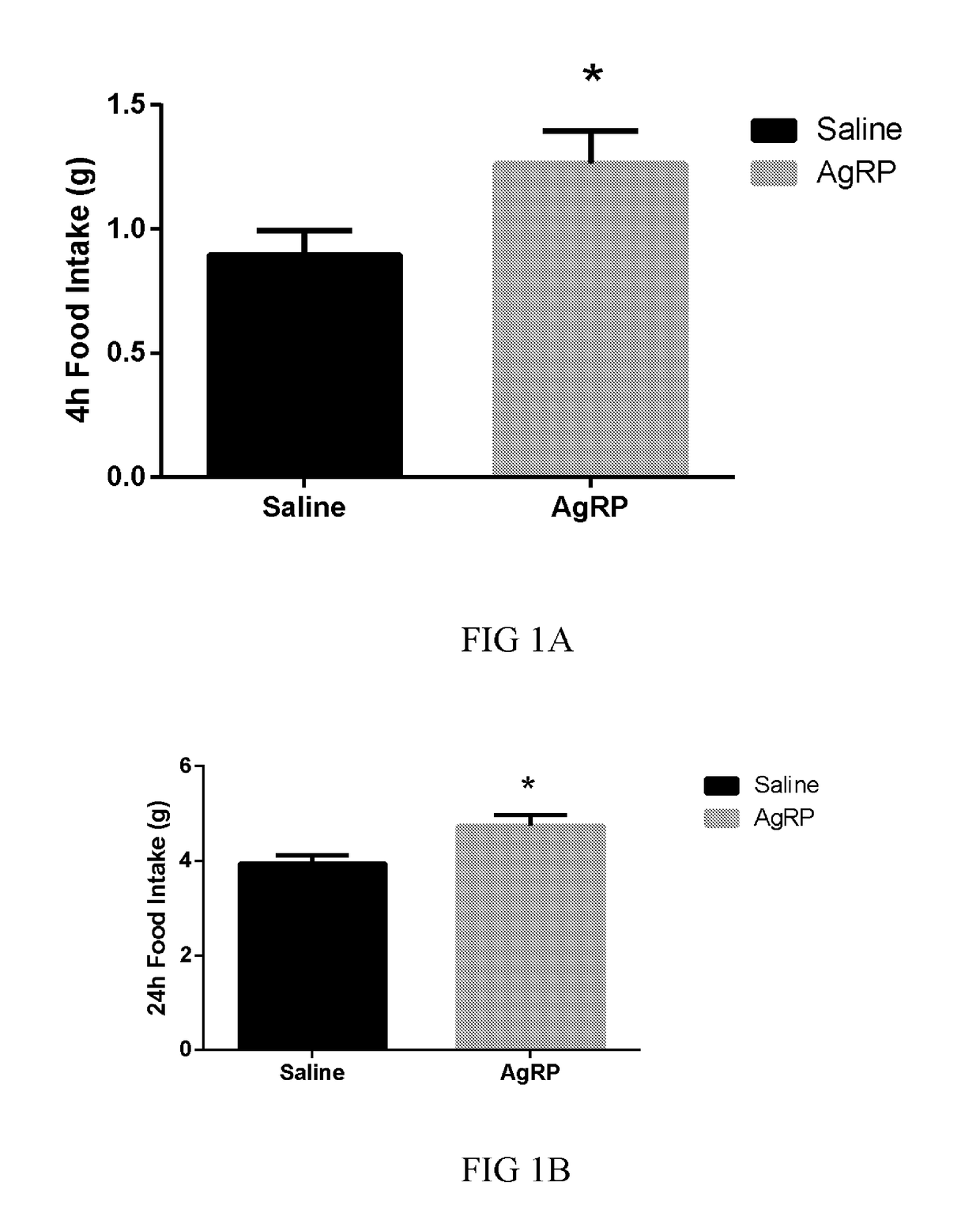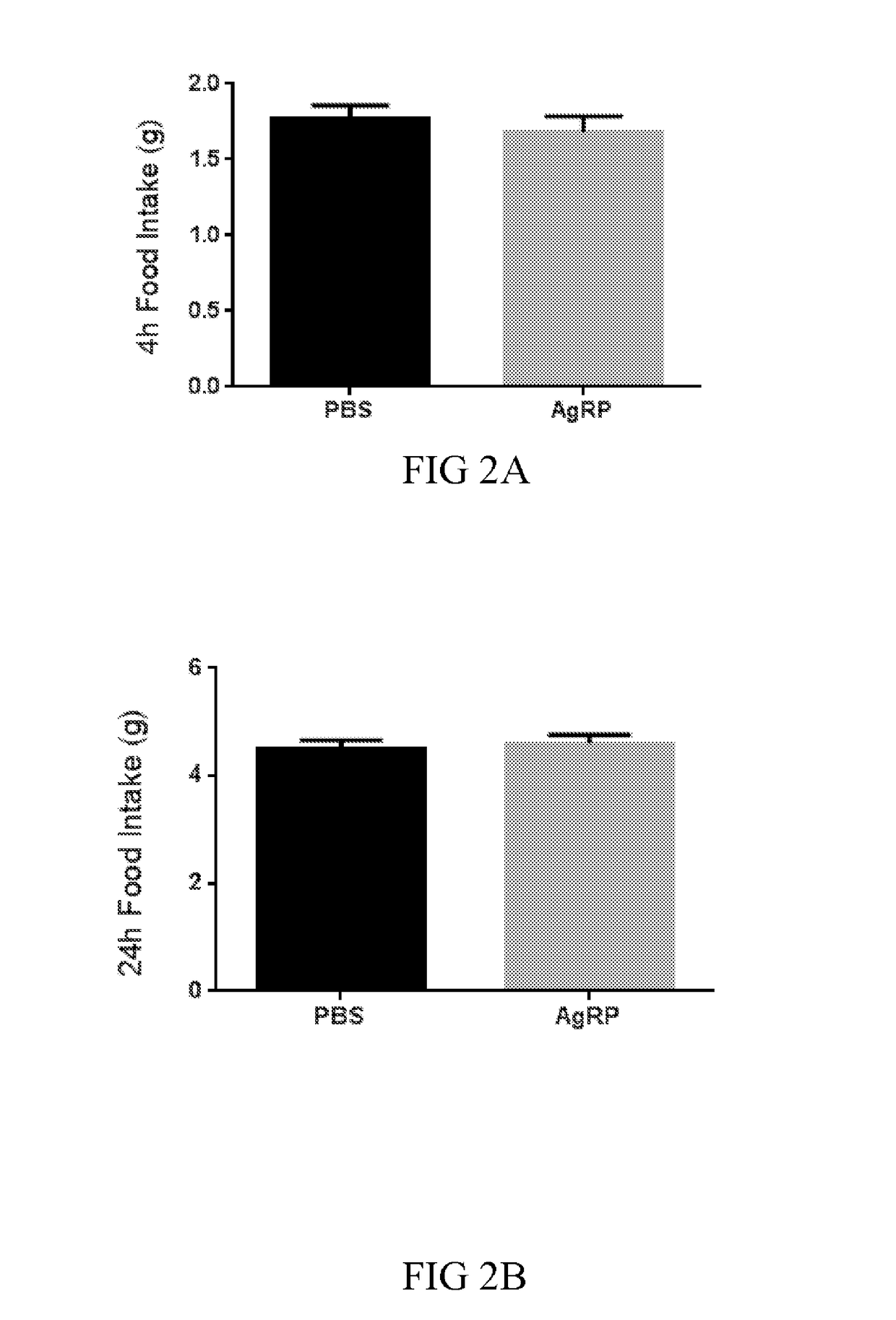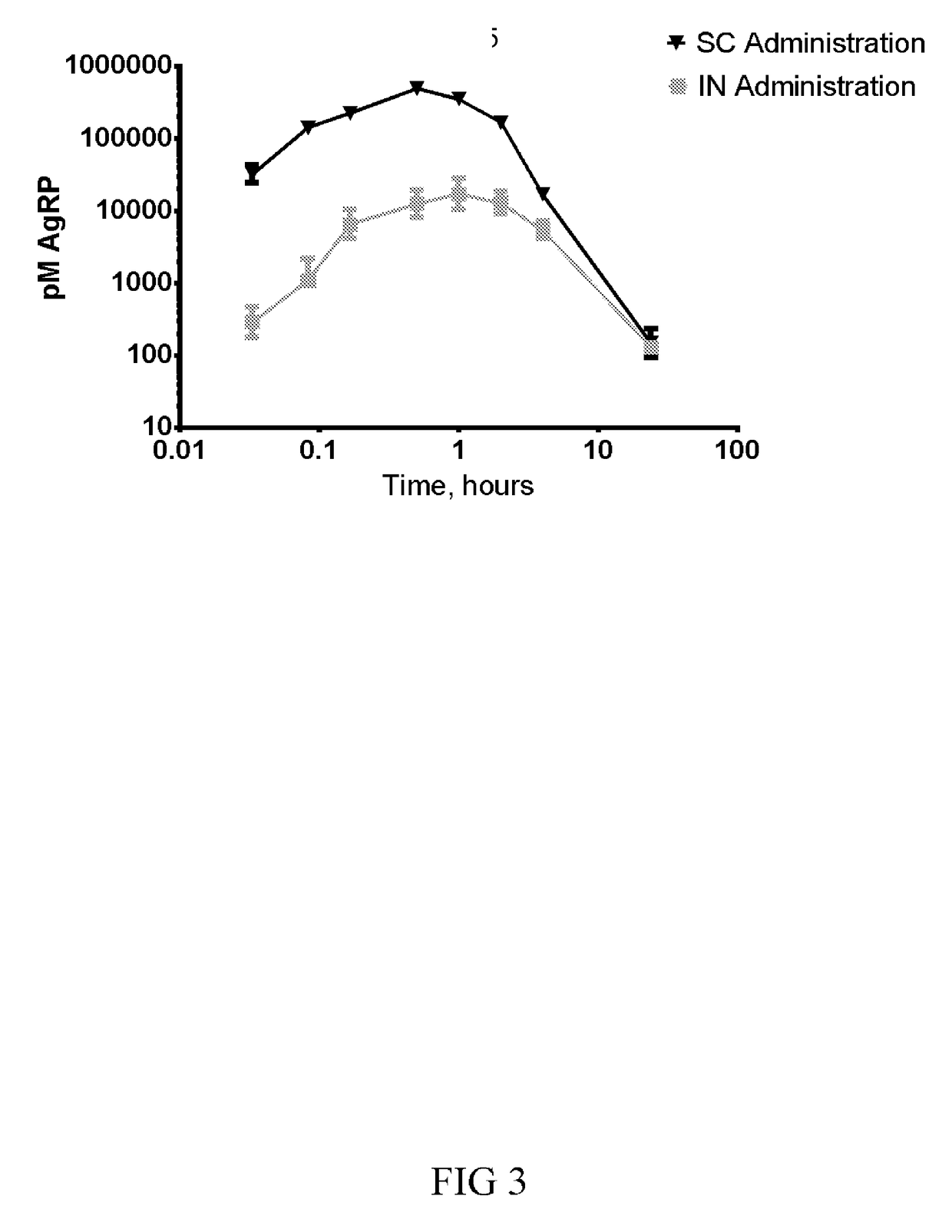Methods of treating anorexia
an appetite-stimulating agent and intranasal route technology, applied in the direction of drug compositions, peptide/protein ingredients, metabolic disorders, etc., can solve the problem that the administration of agrp cannot be easily bypassed in order by the blood-brain barrier (bbb), and achieve the effect of increasing appetite and food intak
- Summary
- Abstract
- Description
- Claims
- Application Information
AI Technical Summary
Benefits of technology
Problems solved by technology
Method used
Image
Examples
example 1
lly Delivered AgRP Stimulates Food Intake in Mice
[0181]The purpose of the following study was to determine if intranasally (IN) administered AgRP would stimulate food intake in C57BL mice.
[0182]IN administration may provide a non-invasive method for delivering therapeutic proteins directly to the central nervous system, bypassing the Blood-Brain Barrier (BBB), by transiting along olfactory- and trigeminal-associated extracellular pathways. Olfactory neurons are unique in that they interface directly with the nasal airway surface in the olfactory epithelium. These neurons then pass through the cribriform plate into the brain where they terminate at olfactory bulb neurons, which then project to deeper structures. The nasal respiratory epithelium is innervated by branches of the trigeminal nerve, or fifth cranial nerve, which may provide another conduit for molecules reaching the CNS (Lochhead and Thorne, 2012). AgRP is a large molecule that does not penetrate the brain with great effi...
example 2
ously Delivered AgRP does not Increase Food Intake in Mice
[0190]The purpose of the following study was to determine if subcutaneously (SC) administered AgRP would stimulate food intake in C57BL mice.
[0191]Research Design and Methods
[0192]Male C57BL mice were housed one per cage with normal chow diet and on a reversed light cycle (dark 11:00-23:00). Each mouse was given 25 μl of AgRP, formulated in saline, which had 57 μg of AgRP.
[0193]One day prior to treatment, 4-h food intake was measured and animals grouped to match group means of food intake. On the day of the study, animals were dosed via SC injection between 10:30 to 11:00 am. Pre-weighed food was provided to the mice prior to the dark cycle (11:00 am). At 4 and 24 h post dose food intake was measured.
[0194]Statistical Analysis
[0195]All data were analyzed using an unpaired t-test comparing PBS and AgRP in saline. A p value of <0.05 or lower was taken to be statistically significant. All data were analyzed and plotted using Gra...
example 3
posure Following Intranasal or Subcutaneous Delivery of AgRP in C57 Mice
[0198]The purpose of the following study was to determine if subcutaneously (SC) administered AgRP would stimulate food intake in C57BL mice.
[0199]Research Design and Methods
[0200]Male C57BL mice were housed one per cage with normal chow diet and housed in normal light cycle (light on 6:00-18:00). Each mouse was given 25 μl of AgRP, formulated in saline, which had 57 μg of AgRP.
[0201]10 min prior to the treatment, tail blood samples were taken and plasma (10 μl) was obtained. Mice receiving an IN dose of AgRP were anesthetized with isoflurane and IN dosed with 25 μl AgRP (57 μg). After being dosed, the mice remained in the isoflurane chamber for 2 min before placed back in their home cages. An alternate group of mice were SC dosed (114 μl) with AgRP (57 μg). Tail blood samples were taken at 2, 5, 10, 30 min and 1, 2, 4 and 24 h post dose. Plasma samples were aliquoted and stored at −80° C. until analysis.
[0202]R...
PUM
| Property | Measurement | Unit |
|---|---|---|
| Weight | aaaaa | aaaaa |
| Disorder | aaaaa | aaaaa |
Abstract
Description
Claims
Application Information
 Login to View More
Login to View More - R&D
- Intellectual Property
- Life Sciences
- Materials
- Tech Scout
- Unparalleled Data Quality
- Higher Quality Content
- 60% Fewer Hallucinations
Browse by: Latest US Patents, China's latest patents, Technical Efficacy Thesaurus, Application Domain, Technology Topic, Popular Technical Reports.
© 2025 PatSnap. All rights reserved.Legal|Privacy policy|Modern Slavery Act Transparency Statement|Sitemap|About US| Contact US: help@patsnap.com



